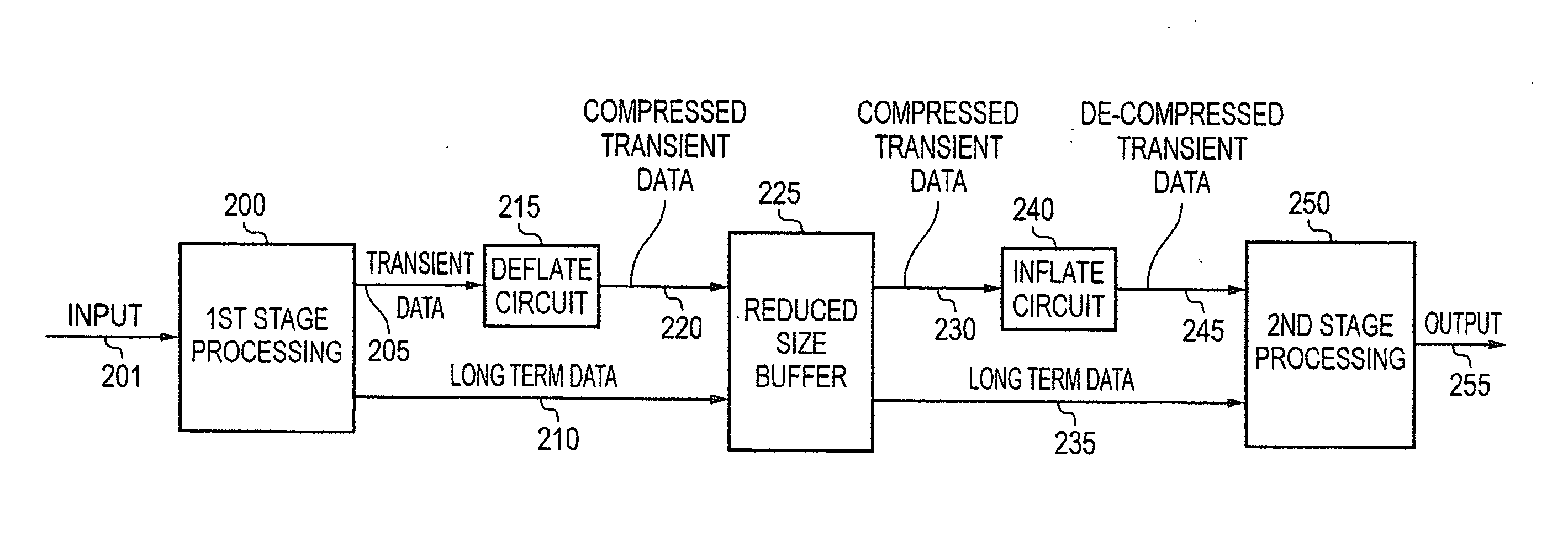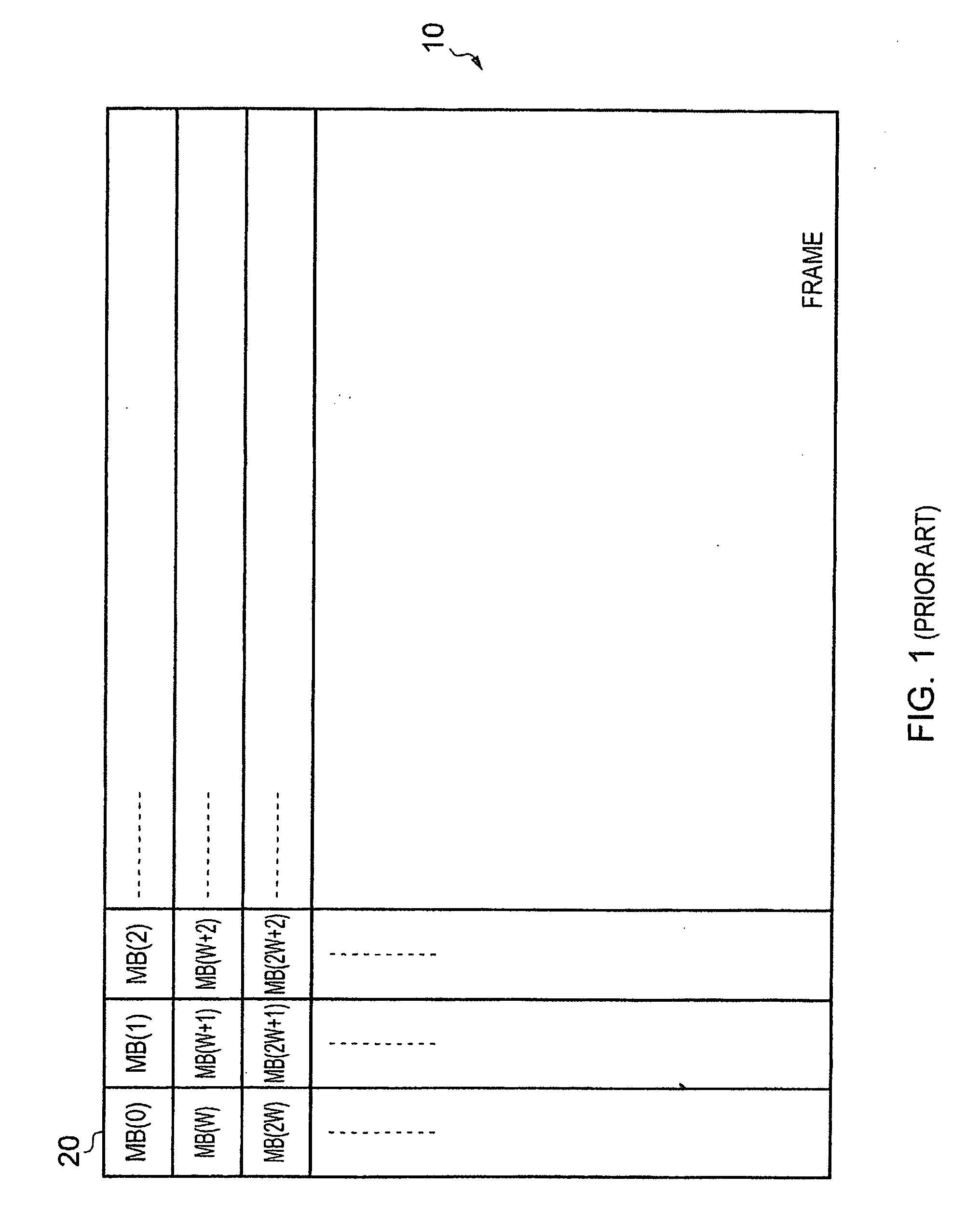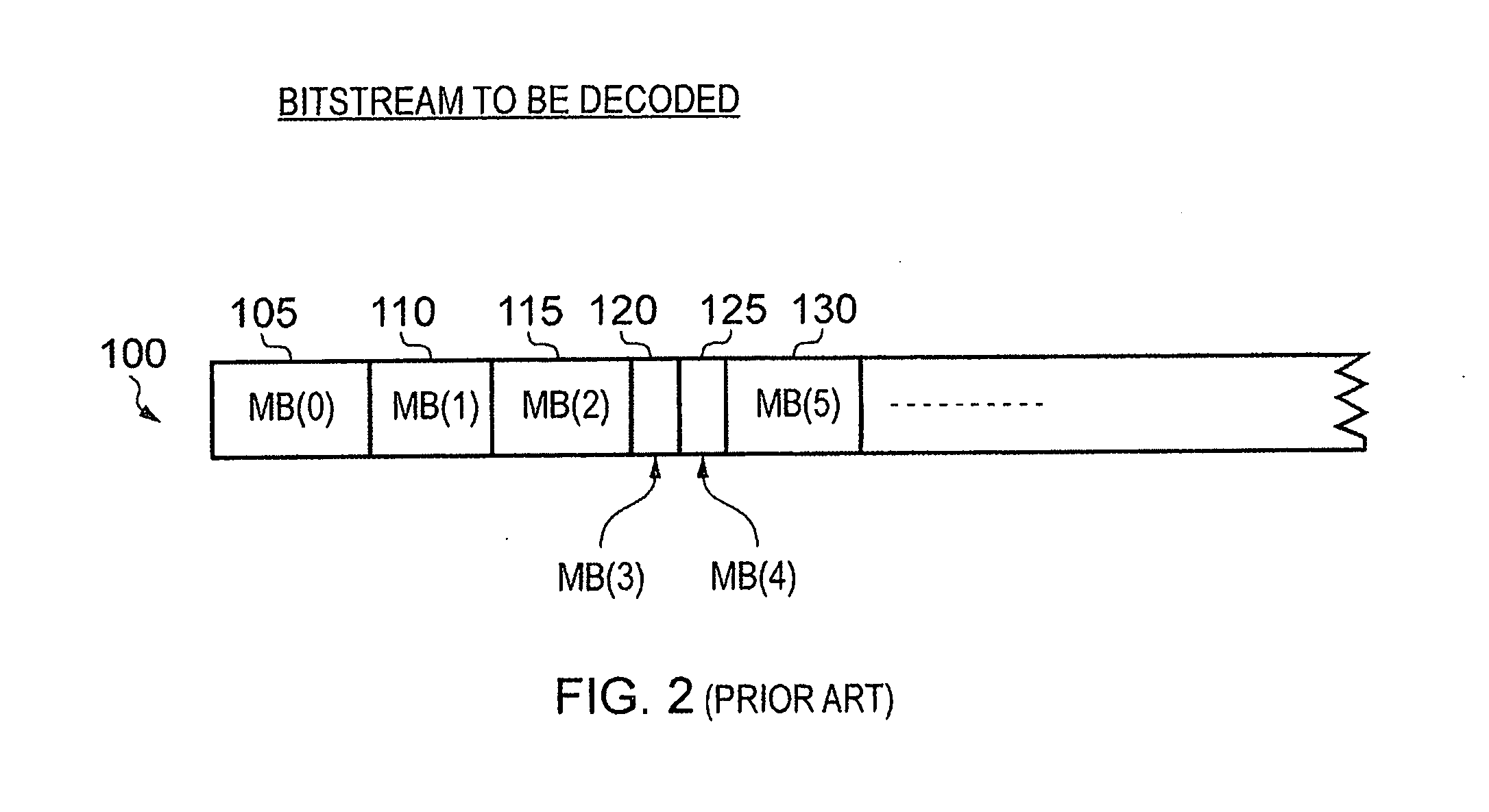Video processing apparatus and a method of processing video data
a video processing apparatus and video data technology, applied in the field of video processing apparatus and a method of processing video data, can solve the problems of not being able to decode two adjacent i-macroblocks in a particular row in parallel, significant increase in the cost and complexity of the parser circuitry, and inability to fully decode content represented by one macroblock. , to achieve the effect of reducing the overall storage capacity, saving space in the buffer, and improving the performance of encoding
- Summary
- Abstract
- Description
- Claims
- Application Information
AI Technical Summary
Benefits of technology
Problems solved by technology
Method used
Image
Examples
Embodiment Construction
[0046]FIG. 4 is a block diagram illustrating a video processing apparatus in accordance with one embodiment. Input video data is received by the first stage video processing circuitry 200 over path 201. The first stage video processing circuitry then performs one or more processing operations on the input video data in order to generate an intermediate representation of the input video data. In accordance with the illustrated embodiment, this intermediate representation takes the form of two separate data portions, the first data portion containing transient data that is only required for processing a single video frame, the transient data being output over path 205, and the second data portion containing long term data required for processing of at least two video frames, the long term data being output over path 210.
[0047]As can be seen from FIG. 4, the long term data is passed to a buffer 225, but the transient data is first passed to a deflate circuit 215, where a compression op...
PUM
 Login to View More
Login to View More Abstract
Description
Claims
Application Information
 Login to View More
Login to View More - R&D
- Intellectual Property
- Life Sciences
- Materials
- Tech Scout
- Unparalleled Data Quality
- Higher Quality Content
- 60% Fewer Hallucinations
Browse by: Latest US Patents, China's latest patents, Technical Efficacy Thesaurus, Application Domain, Technology Topic, Popular Technical Reports.
© 2025 PatSnap. All rights reserved.Legal|Privacy policy|Modern Slavery Act Transparency Statement|Sitemap|About US| Contact US: help@patsnap.com



